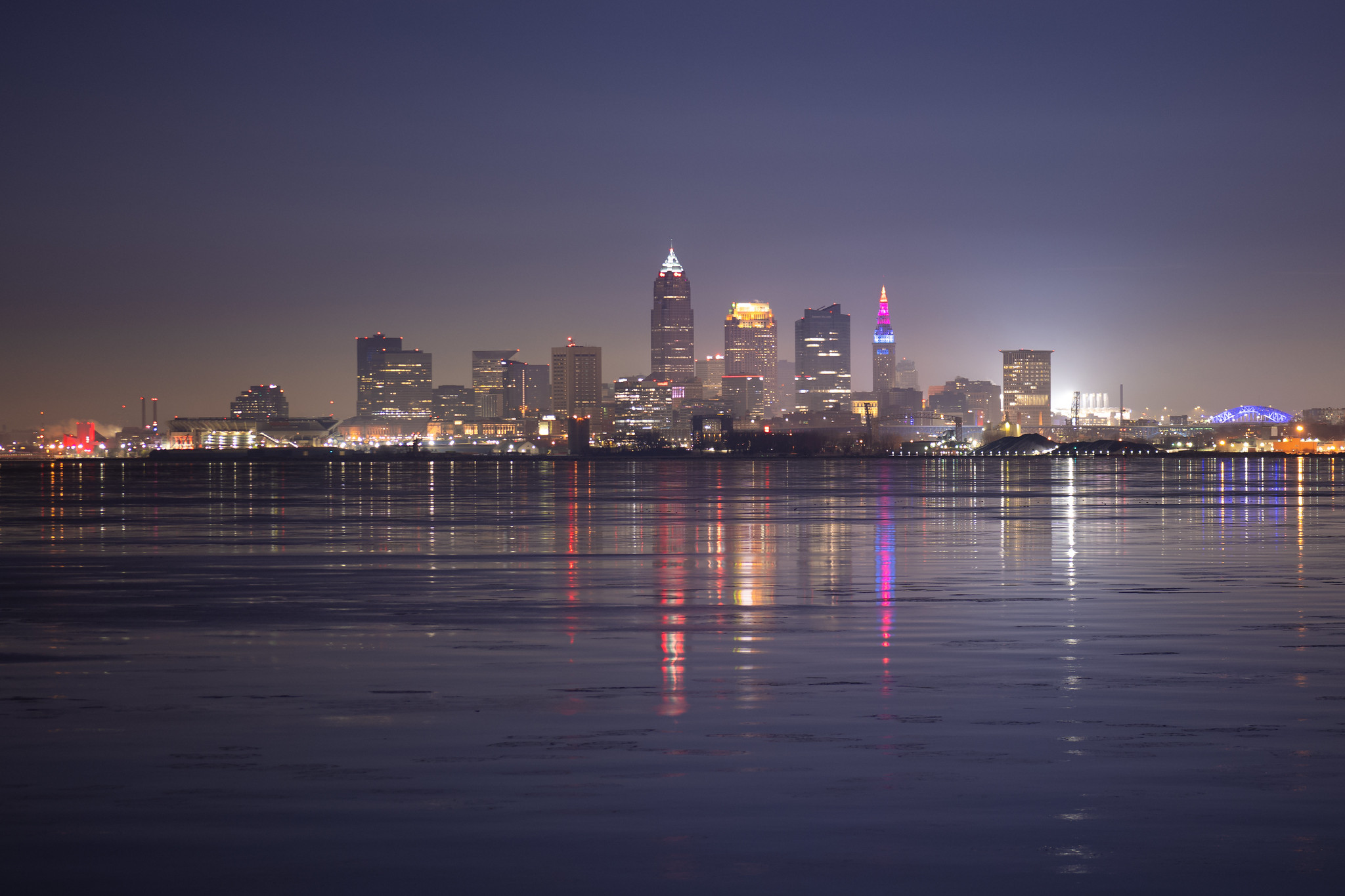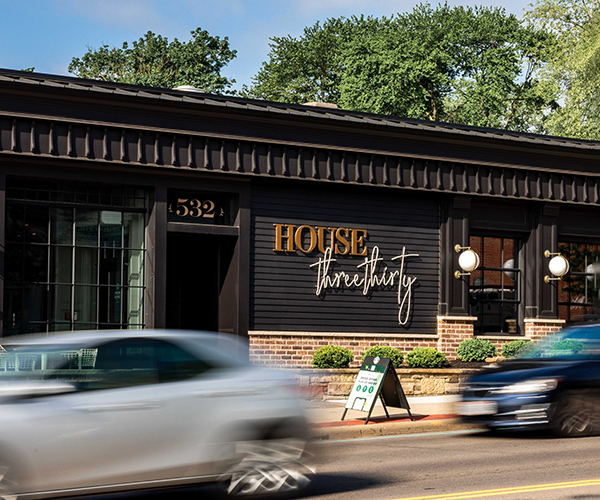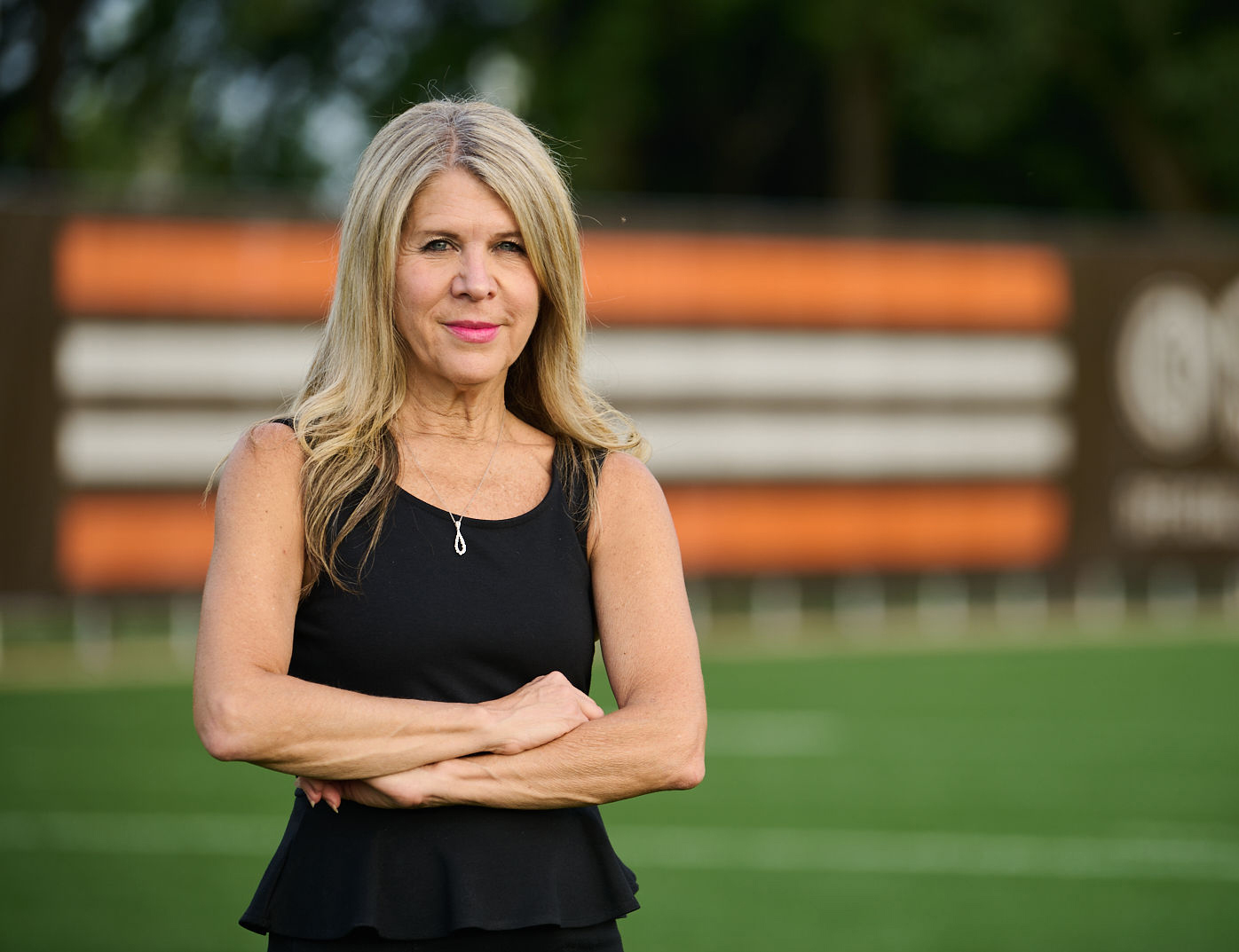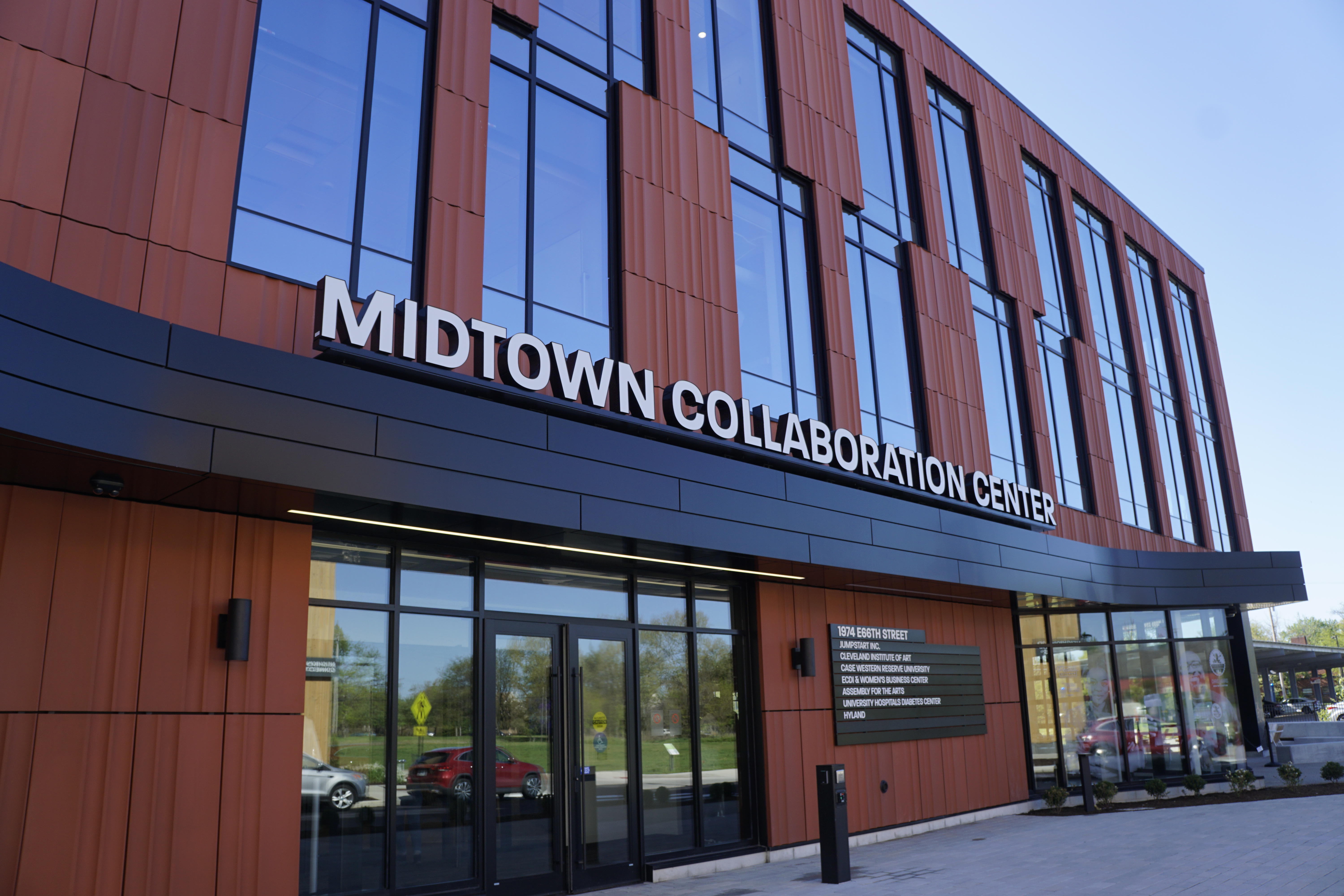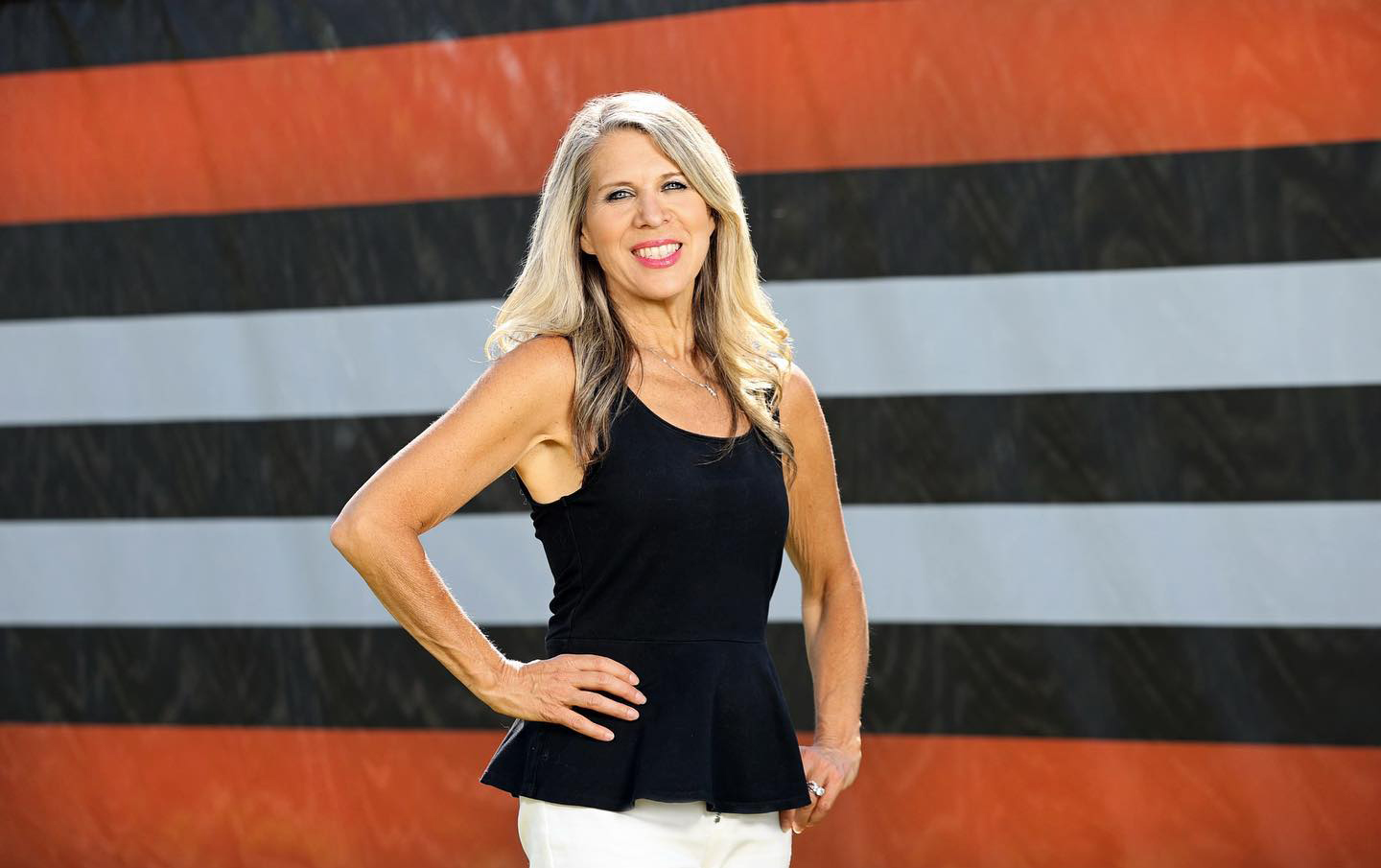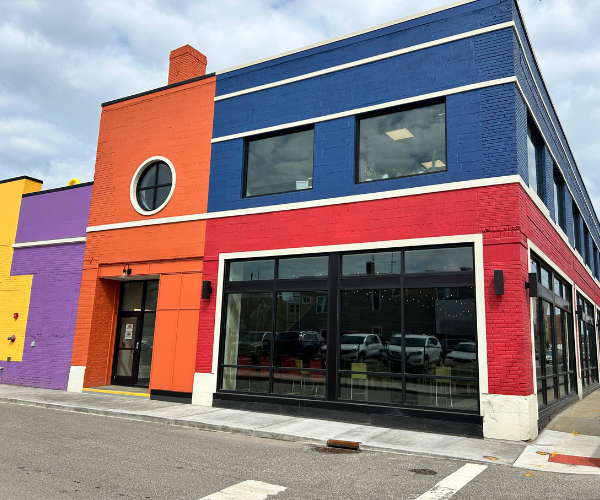Fishing for Plastic With Eddie Olschansky of Trash Fish
by Lauren Bischof | Aug. 21, 2025 | 9:00 AM
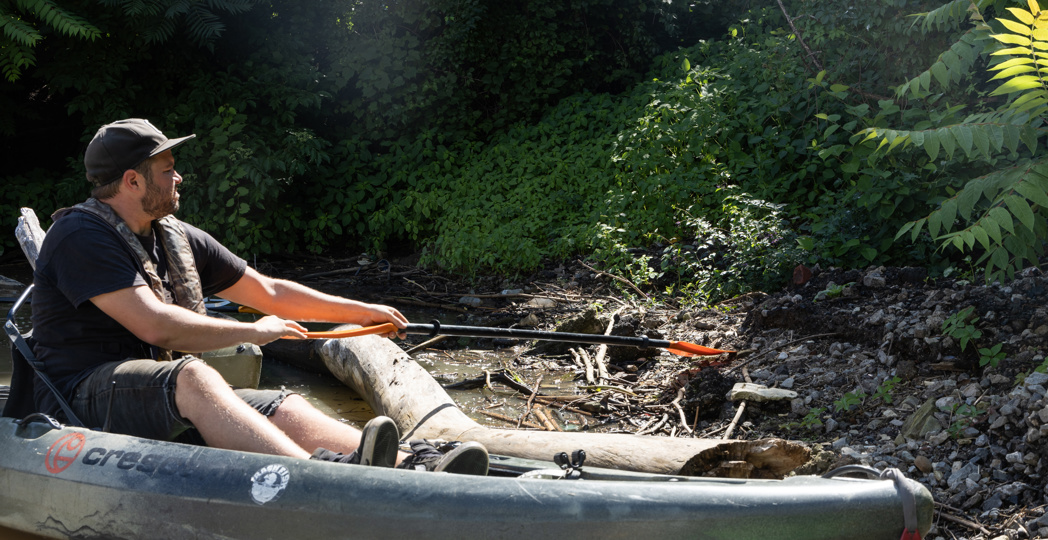
Gavin Tennyson
Eddie Olschansky is one of the many anglers to fish the Cuyahoga River from his kayak. Unlike most fishermen, he always comes back with a catch. Sometimes, he nets small mouth bass or catfish, but more often, he’s fishing for trash.
“I’ve always been a person who will pick up a little bit of trash off the street if I see it,” he says. “If I was having a rough time catching fish, it was never difficult to come back with a net filled with garbage.”
When he first started navigating the crooked river in 2014, Olschansky just couldn’t paddle away from all the plastic bottles and beer cans. So, the fisherman turned environmental activist started Trash Fish CLE, a unique grassroots organization dedicated to cleaning up the river. Soon after, he became obsessed with fishing for trash, quitting his full-time job managing a wood shop and making custom furniture in Pittsburgh to dedicate his life to cleaning up the river. Olschansky accepts donations via Venmo @trashfish_cle and sells T-shirts and stickers to support his cause.
“It’s my full-time job, but it would be hard to say I make a ‘living’ off Trash Fish. Maybe soon, though,” he says.
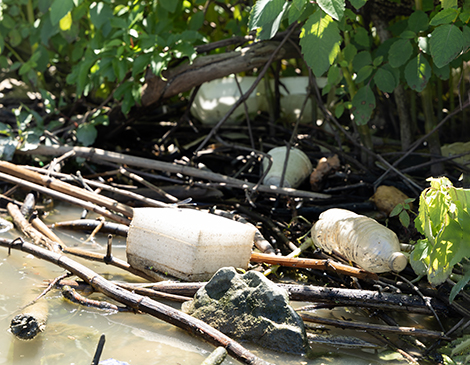
With almost 25,000 followers on Trash Fish’s Instagram page, Olschansky has created quite the media following with volunteers jumping at the chance to get out on the water and contribute to the cause. Now, with 12 free kayaks, life jackets, grabbers and trash bags, Olschansky brings volunteers to the water four days a week, minimum, sharing his knowledge and passion not only about cleaning the river but also what the common person can do to prevent their impact on the environment.
“I started really caring about this river and protecting this river because I recreated on it,” he says. “I wanted to give back to it, and I figured if I could give people the opportunity to come down and do that, they would feel the same.”
On a sunny, serene Wednesday morning in July, I stepped into the army green kayak off Rivergate Park. After a run-through of safety protocols and what to expect out on the water, with a grabber in hand and a trash bag at my feet, another kayaker and I followed Olschansky upstream. Leading us to the trash, he immediately began educating us about the history of the river, the local corporations in Cleveland and the negative impacts of the accumulating garbage. The wake of idling boats pushed trash to the bank. The abundance of garbage floating in our hometown river was astounding. And those plastic bottles and Styrofoam floating by were just the tip of the iceberg.
Bobbing in the current, with the sounds of construction and the Goodtime III boat engine surrounding us, we paddled the river and picked up plastic bottles, mascara tubes, deodorant containers and more. Olschansky told me to look at what’s floating around my kayak, where I soon saw what looked like grains of rice bobbing in the water by the hundreds. “They’re nurdles,” he tells me.
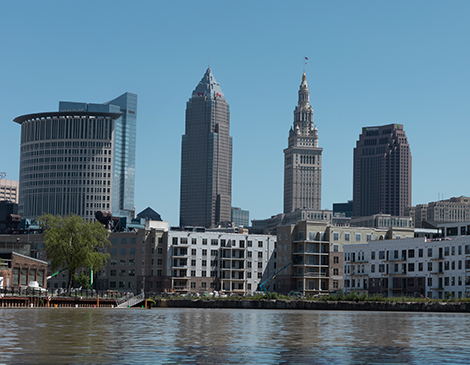
“If single-use plastics are bad, these are zero-use plastics,” Olschansky says. “They never even got turned into a product. Nurdles are the bane of my existence.”
Nurdles are the second-largest source of primary microplastic pollution globally, with an estimated 445,970 tons entering the environment worldwide yearly. These small pre-production pellets are used as raw material for manufacturing plastic products. They absorb harmful chemicals, and once in the environment, they are ingested by wildlife or broken down to even smaller microplastics.
“On our best year, we pulled about a quarter million of these unused, pre-production plastic pellets out of the river,” he says.
Nurdles can spill into water sources during transport, from plastic manufacturing sites and even from plastic recycling sites. Olschansky pulls them from the water, saving them to repurpose in a potential art project. Though mostly, what he pulls from the river ends up in a landfill.

Trash Fish’s mission is a last-ditch effort. His scope is focused on the six miles that lead to the mouth of the Cuyahoga River. Once it ends up in Lake Erie, “remediation efforts would be a moot point,” he says.
“It’s up to us to go out there and clean it up before it enters the drinking water of 12 million people,” he says.
Olschansky fights for the river back on land, too. He advocates against plastic incinerations, calling out corporations on their environmental wrongdoing and often fighting against the EPA’s permits for big business.
“There’s a bigger fish to fry than the person down the street who threw their wrapper out the window,” he says. “It’s the people who are profiting billions of dollars off of selling us all this garbage and passing the responsibility for its waste management onto us.”
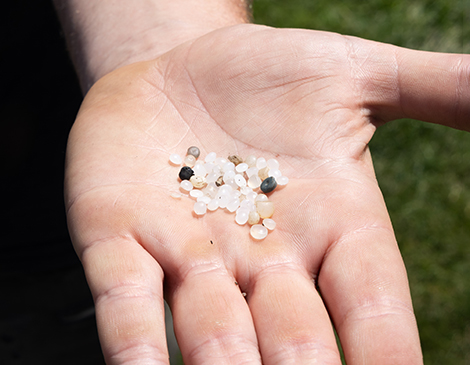
After two hours of work on the river, we headed back to the docks. With my trash bag full, I’ve become addicted to spotting every piece of plastic on the water. Reflecting on my morning, I wondered what I could do in my own life to protect our waterways.
“I always tell people you vote with your wallet,” he says. “Every dollar you spend is as important as any ballot you’ve ever filled out.”
For more updates about Cleveland, sign up for our Cleveland Magazine Daily newsletter, delivered to your inbox six times a week.
Cleveland Magazine is also available in print, publishing 12 times a year with immersive features, helpful guides and beautiful photography and design.
Trending
-
1
-
2
-
3
-
4
-
5

